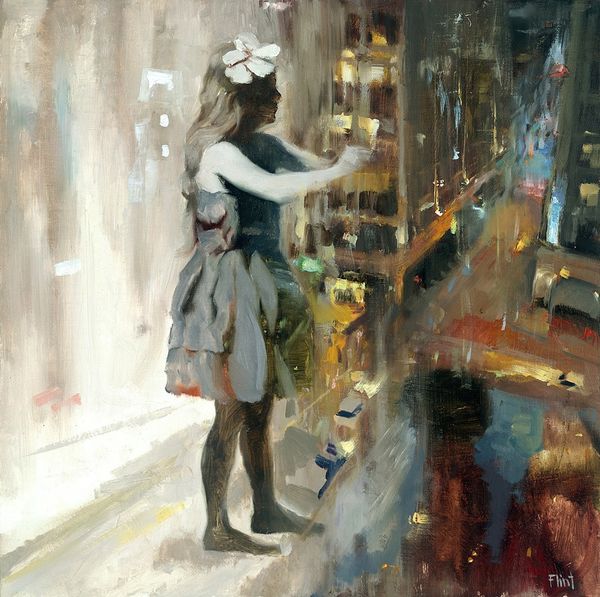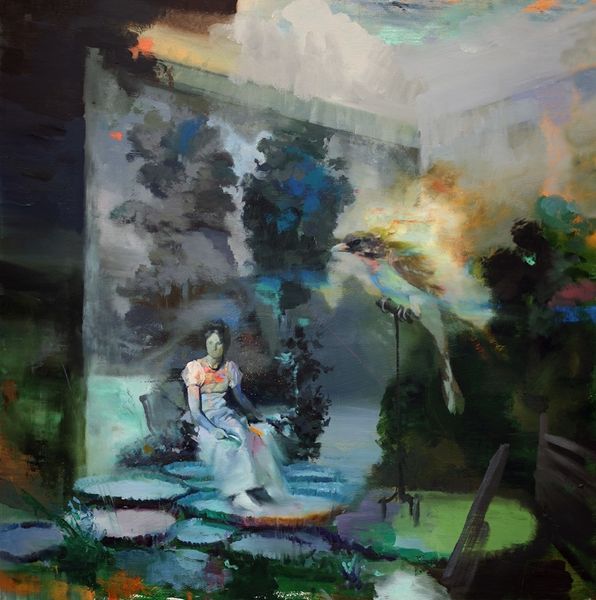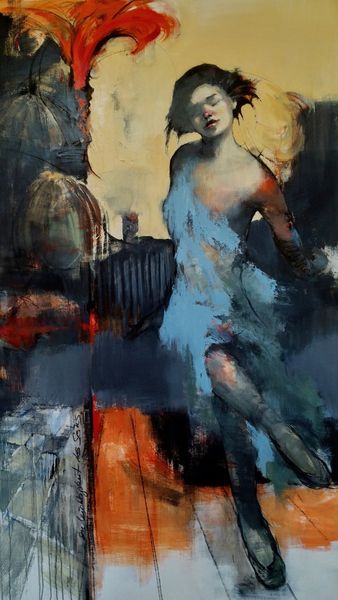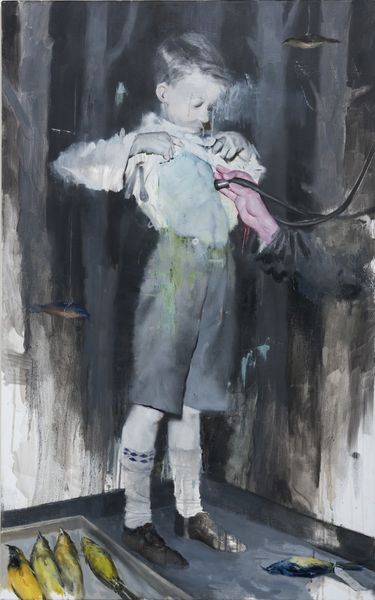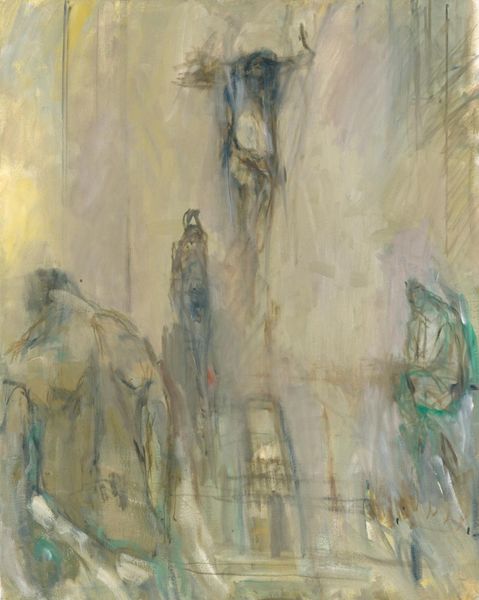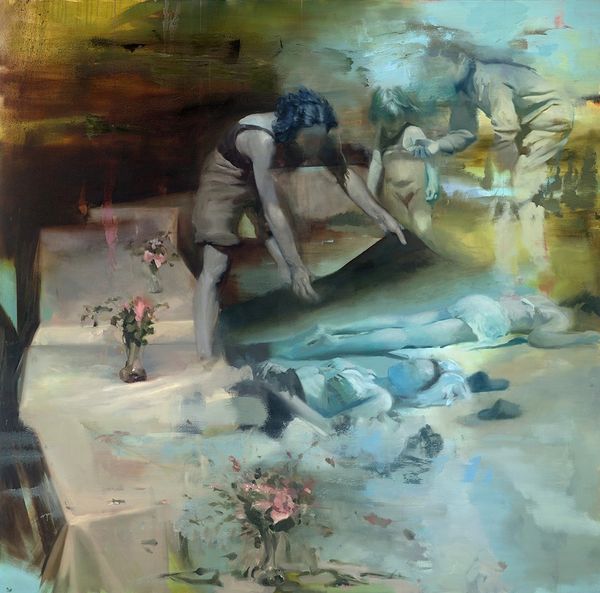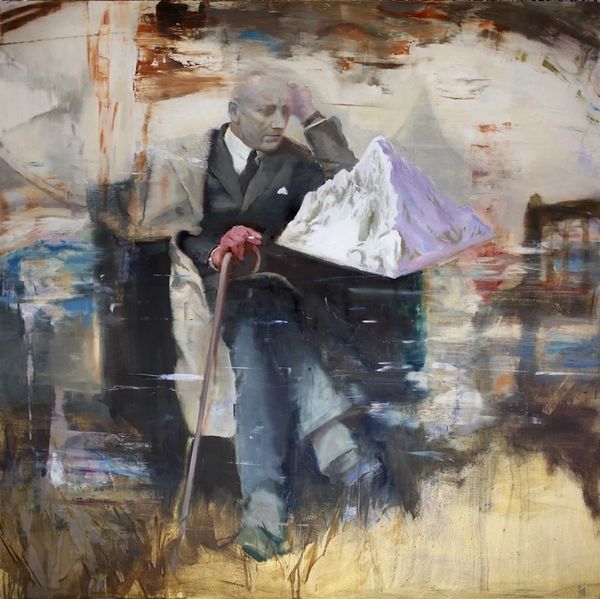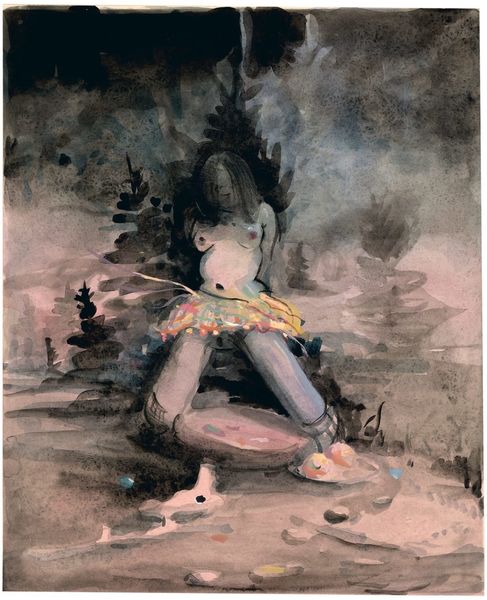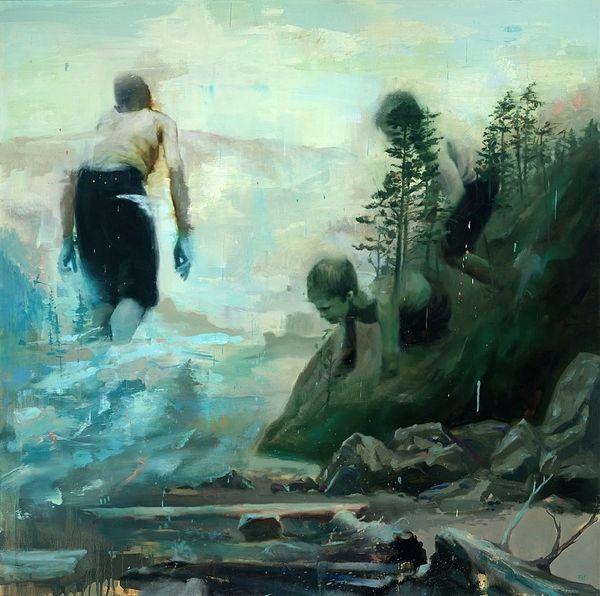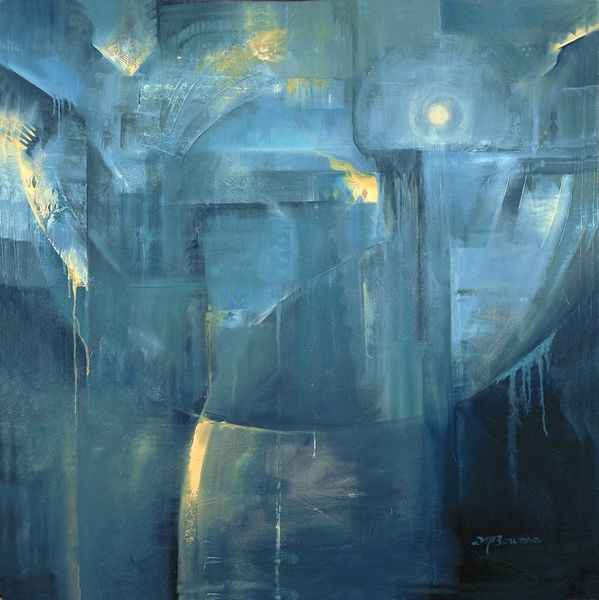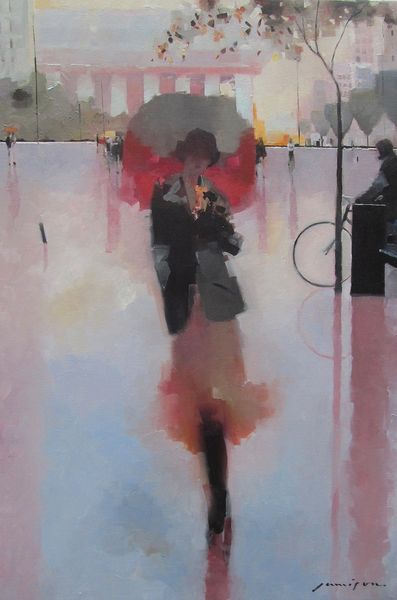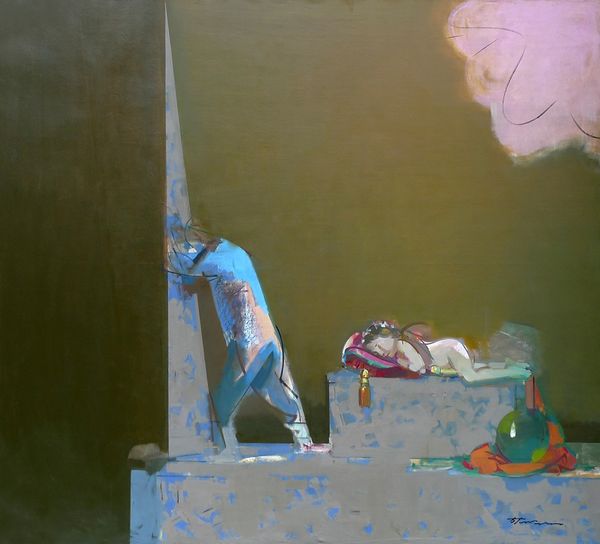
Copyright: Modern Artists: Artvee
Curator: Here we have Joshua Flint's "Dollhouse II," painted in 2016 using oil. Editor: Immediately, I'm struck by the isolation. The girl, seemingly alone on a balcony overlooking the city lights, has an almost ghostly presence against that stark white wall. Curator: Flint often utilizes oil paints with an impasto technique to create texture, mimicking the tangible construction of the depicted buildings. Notice the visible brushstrokes building up the urban landscape and even the girl’s form; you can almost trace the labor. Editor: Absolutely, and it’s hard not to think about labor in terms of gender when viewing this piece. Who builds and maintains our cities, who enjoys their benefits, and who is relegated to the fringes, as this figure seems to be? Her placement evokes questions of access, opportunity, and the invisible forces that shape urban life. Curator: The choice of materials—the thick, almost sculptural quality of the oil paint—echoes themes present in contemporary building practices and reflects anxieties in today's housing markets. The title “Dollhouse II” seems pointed when considering these details. Editor: Right, "Dollhouse II" hints at manufactured environments and perhaps even gendered expectations within the domestic sphere, amplified by the artificial glow of the city lights that become an abstract landscape. Are we looking at constructed fantasies as much as constructed places? Is the city, in the end, just another Dollhouse? Curator: Exactly, there's a palpable tension in the very application of the medium itself. The artist manipulates the oil, layer upon layer, echoing our very act of manipulating space and our interactions within it. The final strokes mimic the delicate structure of cities. Editor: Seeing that tangible process really does invite contemplation on our lived realities. In some way, it evokes reflection on how race and class influence one's proximity to those city lights, and who ultimately has access to such elevated views. Curator: So in the end, we have the intersection of process and context, and that's how Flint allows us to question what and for whom these environments are made. Editor: Ultimately, this image makes you think, as you say.
Comments
No comments
Be the first to comment and join the conversation on the ultimate creative platform.

